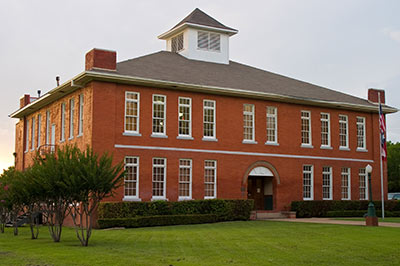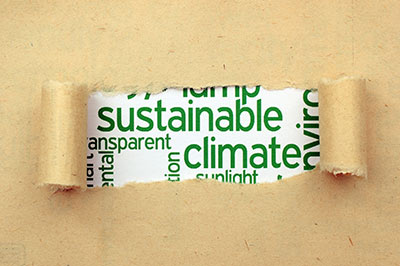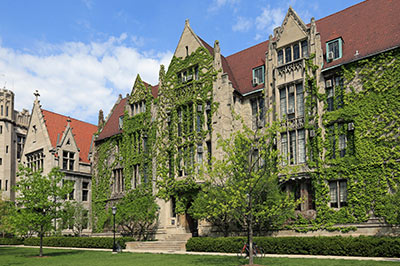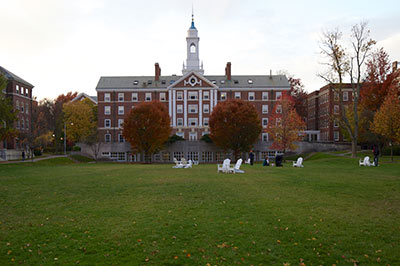EPA, 2016. Numerous sources of funding are available to create and support healthy, productive school environments for students and staff. The links on this page describe how to find a variety of funding sources, including grants, tax credits, loans and others.
Tag: Green Schools
School Facilities and Sustainability-Related Concepts: A Study of Hellenic Secondary School Principals’, Teachers’, Pupils’ and Parents’ Responses
Zepatou, Loizidoe, Chaloulakou, & Spyrellis, 2016
Effective building environment sustainability frameworks and practices need to take users’ opinions into account. For this purpose, a survey questionnaire was developed and the “Panhellenic survey of school spaces, materials and environmental-comfort conditions in secondary schools and perceptions, stances and attitudes of pupils, teachers, principals and parents towards sustainable construction and the selection and use of materials in schools that are friendly to the environment and human health” was conducted nationwide with a random stratified sample of 170 Hellenic public secondary schools. Selected findings are presented and discussed here. These show that existing school facilities are primarily rated as good and that selection and use of materials friendly to the environment and human health are extremely important. User groups believe that they should participate in planning/selecting sustainable solutions for schools. An Index of 10 School Environment Desired Outcomes associated with environmentally friendly and health-friendly materials selection and use was devised. Relevant factors were extracted and interpreted. The research establishes users’ subjective opinions that may be considered and integrated into procedures for improving school buildings, assessing and selecting environmentally friendly materials and implementing strategies for sustainable school design, building and operation.
Addressing Indoor Air Quality in School Energy Efficiency Upgrades: Review of Selected State Policies
Environmental Law Institute, 2016.
Energy efficiency continues to be an important component of federal, state, and local efforts to reduce greenhouse gas emissions. School facility upgrades that increase energy efficiency can help school districts advance their educational mission by reducing energy and other operating costs. Facility upgrades that protect and improve indoor air quality (IAQ) also support the core mission of schools by promoting staff and student health, productivity, and attendance. There is now broad recognition that it is possible to achieve both energy efficiency and indoor air quality goals as part of a school retrofit project. When undertaking energy efficiency and other facility upgrades, early consideration of IAQ issues can help schools avoid unintended, negative consequences and reap the twin benefits of energy savings and a healthier, more productive school environment.
State laws, regulations, and guidance can facilitate the integration of IAQ and energy efficiency goals. This report discusses three areas of potential policy development: state funding for school facility upgrades, energy savings performance contracting, and regulation of indoor pollutants during renovation. While these are not the only policy areas ripe for consideration, the examples described throughout the report reflect a variety of strategies for maximizing the health benefits of energy retrofits and other school facility upgrades.
State Funding for School Facility Upgrades
States operate a variety of programs that provide grants, loans, and other financing for school energy efficiency retrofits and other facility upgrades, and these programs are particularly important for school districts that have limited resources for capital-intensive measures. Currently there are few state funding programs that affirmatively require or encourage the integration of IAQ and energy goals, however the report highlights examples of policy strategies that have been adopted and could be expanded in the future. These include:
- Establishing energy-related IAQ improvements as allowable or priority uses of energy efficiency funding;
- Considering non-energy benefits, such as enhanced IAQ, in awarding energy-efficiency funding; and
- Establishing IAQ measures as priorities for general school renovation and repair programs.
Addressing Indoor Air Quality in School Energy Efficiency Upgrades
ENVIRONMENTAL LAW INSTITUTE, January 2016.
Energy efficiency continues to be an important component of federal, state, and local efforts to reduce greenhouse gas emissions. School facility upgrades that increase energy efficiency can help school districts advance their educational mission by reducing energy and other operating costs. Facility upgrades that protect and improve indoor air quality (IAQ) also support the core mission of schools by promoting staff and student health, productivity, and attendance. There is now broad recognition that it is possible to achieve both energy efficiency and indoor air quality goals as part of a school retrofit project. When undertaking energy efficiency and other facility upgrades, early consideration of IAQ issues can help schools avoid unintended, negative consequences and reap the twin benefits of energy savings and a healthier, more productive school environment.
State laws, regulations, and guidance can facilitate the integration of IAQ and energy efficiency goals. This report discusses three areas of potential policy development: state funding for school facility upgrades, energy savings performance contracting, and regulation of indoor pollutants during renovation. While these are not the only policy areas ripe for consideration, the examples described throughout the report reflect a variety of strategies for maximizing the health benefits of energy retrofits and other school facility upgrades.
The Outdoor Classroom of Al Ghadeer Kindergarten
Travis R. Dunlap and Linda Lemasters.
Outdoor learning is a trending topic in education research, and the benefits of outdoor classrooms are increasingly viewed as indispensable. While it would seem that children in the 21st century spend less time outdoors than previous generations, researchers have reinvigorated conversation on the importance of our children’s relationship to natural environments. Exposure to the natural world is recognized increasingly as an integral component of students’ development and education, and outdoor classrooms are an instrumental way to foster the reconnection of students with nature.
Outdoor learning provides very positive outcomes in the cognitive, physical, and social development of students. Researchers have demonstrated numerous advantages for students’ learning experiences in natural environments. For example, children who have contact with nature tend to score higher on tests involving concentration and self-discipline.[1] A reverse correlation also exists: the lack of a connection to the outside may exacerbate Attention Deficit Disorder (ADD) in children.[2] Additionally, the physiological benefits of children’s involvement with nature cannot be ignored. For example, researchers have concluded that exposure to natural light reduces the risk of nearsightedness. Social and psychological benefits also are noted. As an example, when students play in a natural environment, their play is more imaginative, and these children show heightened language skills and greater ability for collaboration.[3] These are just a few of the many advantages of outdoor learning. Consequently, schools around the world are embracing the outdoor classroom model to maximize the related learning and behavior outcomes for students.
[1] Andrea Faber Taylor and Frances E. Kuo, “Coping with ADD: The Surprising Connection to Green Play Settings,” Environment and Behavior 33, no. 1 (2001): 54–77.
[2] Richard Louv, Last Child in the Woods: Saving Our Children From Nature-Deficit Disorder, Updated and Expanded edition (Chapel Hill, N.C: Algonquin Books, 2008), 48.
[3] Robin C. Moore and Herb H. Wong, Natural Learning: The Life of an Environmental Schoolyard. Creating Environments for Rediscovering Nature’s Way of Teaching. (Berkeley, CA: MIG Communications, 1997); Ingunn Fjortoft, “The Natural Environment as a Playground for Children: The Impact of Outdoor Play Activities in Pre-Primary School Children,” Early Childhood Education Journal 29, no. 2 (January 2001): 111–17.
Impact of views to school landscapes on recovery from stress and mental fatigue
Dongying Li, William C. Sullivan.
Previous research has demonstrated positive associations between the greenness of high school land- scapes and school wide academic performance. We do not known, however, if green landscapes cause better performance or if the association between the two is a product of self-selection. If there is a causal relationship, the pathways through which green school landscapes affect student performance remain unclear. We hypothesize that views onto green landscapes help students recover from mental fatigue and stress. To test these hypotheses, we conducted a randomized controlled experiment with 94 high school students at five high schools. Participants were randomly assigned to classrooms without windows or with windows that opened onto a built space or a green space. Participants engaged in typical classroom activities followed by a break in the classroom to which they were assigned. Attentional functioning was measured using Digit Span Forward and Backwards. Physiological stress levels were measured by skin conductance, body temperature, pNN50 (the proportion of the number of pairs of successive NNs that differ by more than 50 ms divided by the total number of NNs) and LF/HF (the ratio between low- frequency peak and high frequency peak). Results demonstrate that classroom views to green landscapes cause significantly better performance on tests of attention and increase student’s recovery from stressful experiences. A lack of mediation effect demonstrates that attention restoration and stress recovery are two distinct processes. Implications for school site selection, design and renovation are discussed.
A Green Cleaning Program Starts Here: Five Simple Steps to Green Cleaning in Schools
You’re reading this right now because you care about the health of your school and community. By adopting a green cleaning program at your school, you can positively affect the health of each and every person who enters its doors.
Transitioning to a green cleaning program is a big change, but it’s a change that many schools have already made—with positive results. Learn more about why green cleaning is important and how you can get started at your school.
GREEN SCHOOLS – THE IMPLEMENTATION AND PRACTICES OF ENVIRONMENTAL EDUCATION IN LEED AND USED GREEN RIBBON PUBLIC SCHOOLS IN VIRGINIA
Steve Marable, 2014
The purpose of this study was to examine the environmental education curriculum which has been utilized within Green Schools. For this study the researcher defined Green Schools as educational facilities with Leadership in Energy and Environmental Design (LEED) certification or United States Education Department (USED) Green Ribbon recognition. Currently, there is no set standard for the implementation of environmental education in Green Schools or for schools that utilize the building as a teaching tool for students. This descriptive study surveyed Green Schools in the Commonwealth of Virginia in order to better understand what common programs and curricula were being utilized. This study will also assist in establishing pedagogical best practices for environmental education while describing how LEED certified buildings are currently being used by educators as a teaching tool to support sustainable practices.
Overall, 14 Green Schools in the Commonwealth of Virginia agreed to participate in the study. Once principals gave consent for their school to participate in the study, they were asked to respond the survey instrument and invite teachers to participate in the Green Schools eSurvey also. The survey instrument consisted of 14 multiple choice and open response survey items. Overall, 98 principals and staff participated in the survey. Multiple choice survey questions served as the quantitative data for the research study. Quantitative data were examined to report descriptive statistics to provide parameters about the sample population. The frequency and percentage from each category, mean, and mode were also reported from each quantitative iii survey item. Qualitative data were examined by emerging themes according to pedagogical strategies and programs. The findings from the study indicated that teachers are employing practices that are consistent with current emphases on environmental education. Data also supported that educators take pride in their buildings and incorporate the facility as a teaching tool in a variety of instructional practices throughout the Commonwealth of Virginia.
Wood Makes the Grade For Student Housing
College Planning and Management, 2015
Faced with today’s economic pressures, university officials and developers of state-funded education projects are challenged with providing high-quality buildings for students that stay within budget while meeting tough safety and performance standards. For this reason, wood is increasingly becoming the material of choice for student housing. This is showcased by several projects across the U.S. where wood framing was chosen for its flexibility, affordability and speed of construction.
Consistently Green
College Planning and Management, 2015
Sustainability on campus is more than just turning off lights or instituting a recycling program. Schools have gone “all in” with sustainability: offering degrees in it, integrating it into their operations, updating their facilities and pushing the cutting edge in numerous aspects of campus operations. Often the results are groundbreaking; sometimes they make financial sense, occasionally they are problematic. Here, three schools share their sustainability successes and failures.











